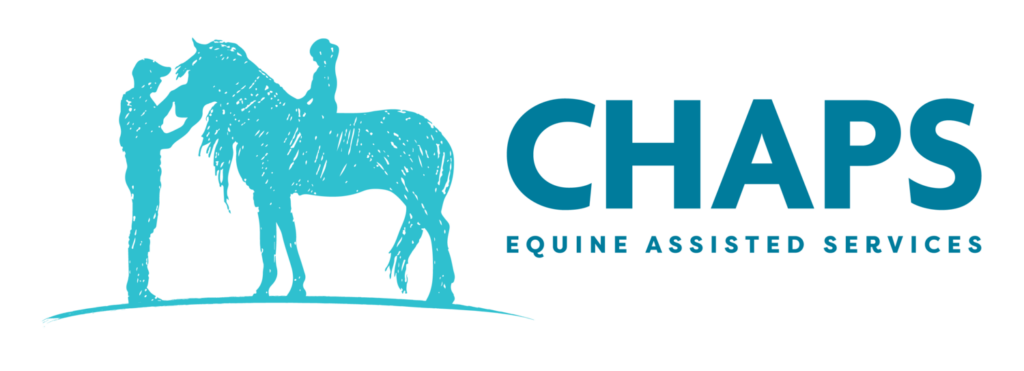
Ask any rider and they’ll likely tell you the first place they go after a tough day is to the barn. The healing power of horses is no secret to those who spend time around horses regularly. Equine Assisted Services (EAS) brings together horses and humans to work as one towards a common goal — learning together, growing together, and healing together.
Not every horse is suited to work in a therapy program, and having the right horses to support a successful program is key. Finding the perfect horses for an EAS program can be challenging.
“Without the horses, we could not serve anyone,” said Kristen Marcus, Executive Director of CHAPS Equine Assisted Services. “Our entire mission revolves around the horses.”
CHAPS was founded in 2004 and began offering services for youth and adult riders living with disabilities at their facility in Sheridan, Wyoming. In 2011, equine facilitated psychotherapy was added to serve veterans. The program expanded again in 2017, adding equine assisted learning and adaptive (therapeutic) carriage driving programs. CHAPS’s mission is to be a resource for empowerment and healing as well as physical and mental well-being through EAS.

It is important that horses working in EAS programs are healthy, both mentally and physically. Most of the horses in the CHAPS program are donated, giving horses who are a good fit for the work a second career.
“Our profession has a reputation of being ‘pony rides’ in which we work hard to educate people on the reality of what we do,” explained Marcus. “Our horses work hard and we need them to be sound, sane, and have the ability to have a good quality of life. We also work very hard to keep them sound, sane, and happy.”
The age, breed, size, and needs of each horse in the CHAPS program is carefully managed to ensure that they are feeling their best and enjoying their job. The herd ranges from 13-30 years old, and the age range poses a challenge for management. Some need blankets and specialized feed while others do not. Finding tack for the herd is also a challenge.
“Each horse is assigned a color and all his/her equipment is in that color,” explained Marcus. “Finding draft size halters in pink or teal is very hard. Finding draft sized blankets in colors can be challenging too. Strangely enough, finding large pony equipment in certain colors is also very hard.”

Many of the older CHAPS horses are older and some of them have special needs such as insulin resistance, Cushing’s disease, laminitic flare-ups, or degenerative joint disease. Managing a herd of multiple breeds — including Percherons, Belgians, Quarter Horses, Paint Horse, Haflinger, Shetland, and draft cross — has been a challenge as well. Each horse’s dietary needs are different so they are hand-fed a diet customized to their individual needs.
Soundness is an important part of keeping the horses feeling their best, so every CHAPS horse is on a joint supplement. In addition, pain medication is provided when there are any indications of pain, regardless of the horse’s age or the condition of their joints. The older horses are watched closely for changes in body condition score and attitude.
“If they start acting like they’re in pain, the first thing we try is a pain medication resembling Bute-less®,” said Marcus. “If that doesn’t help, we consult with our vet on options.”
In addition, regular chiropractic care, many horses, acupuncture treatments donated by a local vet and regular dental care also help keep the CHAPS horses happy and healthy.
While managing such a large and diverse herd can be challenging, the work these horses do and the great service they provide to the people who need them is immeasurable. By taking the best care of their horses, CHAPS ensures they can continue to connect people and horses so they can learn, grow and heal together for years to come!
Article Sponsored by:







